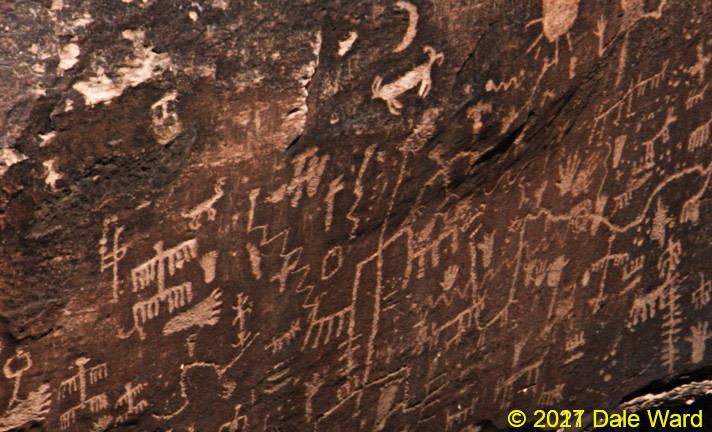Petrified Forest/Painted Desert
A trip through the Painted Desert and Petrified Forest, with a stop for fossils
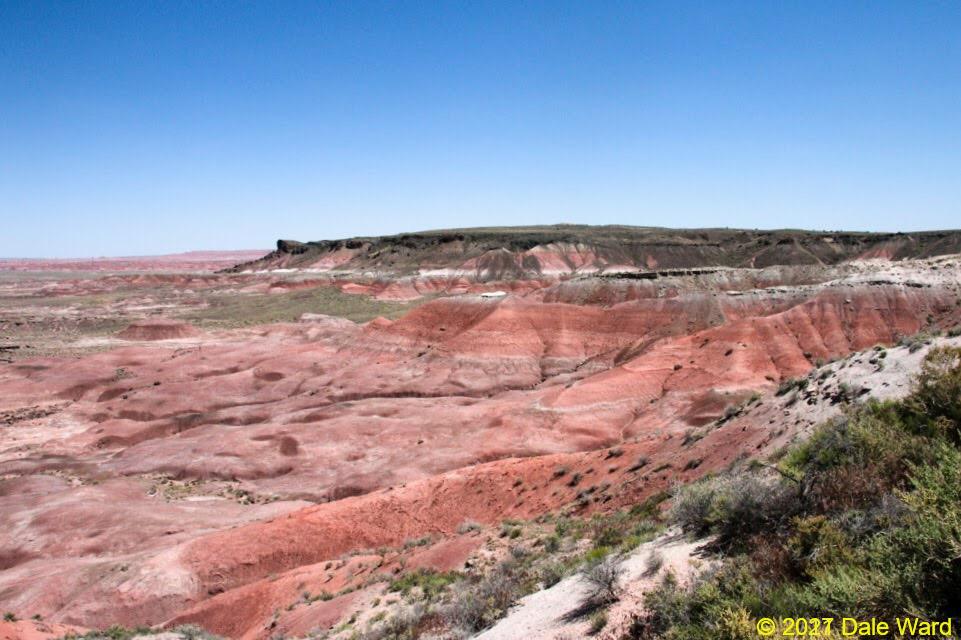 A view of the Painted Desert from one of the Park lookouts
A view of the Painted Desert from one of the Park lookouts
I was driving to Phoenix a few weeks ago, and the trip was feeling very long.
This was just at the beginning of the summer heat. The air was cool enough that I wanted to get outside and into the sun, but hot enough that I were happy to get back out of the sun just a few minutes later. There was a warm, pizza-oven breeze blowing. It felt like a dry-run for the heat of the upcoming summer.
A Rickie Lee Jones was playing over and over in my head - Rodeo Girl. She sang of Medicine Hat horses, and deserts, and loss, and “…a petrified forest of trailer parks and Fords”. The song fit the landscape very well, and made me want to stay, to see more of it.
The exit for Painted Desert/Petrified Forest National Park was coming up, and the time seemed right. So I turned off of I-40 and made a quick detour through the Park.
The Painted Desert was named in the 1540’s by some of Coronado’s men. Coronado was looking for Cibola’s cities of gold, and the expedition was running short of supplies. He sent a contingent of his men off to look for water. As they traveled, they passed through a land they referred to it as El Desierto Pintado - “The Painted Desert.”
And what a trip that must have been - to ride through this land without a map, without knowing for-sure where they were going. I wonder if they ever made it to the river. People were made of sterner stuff in those days.
One of the stops on the driving loop was an overlook of “Newspaper Rock” - a boulder covered in petroglyphs. The Park Service had put up guard rails, so it wasn’t possible to get near the rocks. But it was still a pretty neat thing to see.
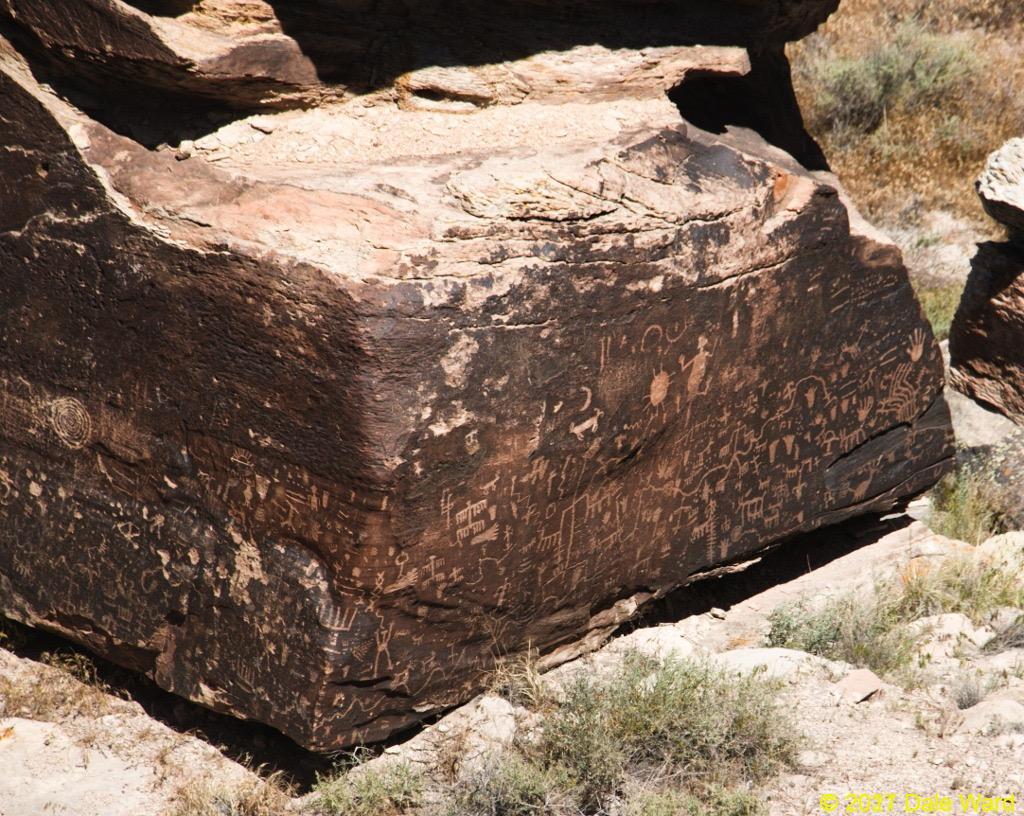 Newspaper Rock, Painted Desert
Newspaper Rock, Painted Desert
It’s my understanding that these petroglyphs are Anasazi. I’ve always thought of the Anasazi as being more Four-Corners-centric than this. I had no idea that the Anasazi had regularly come this far South.
The desert along the tour loop was glorious. As you drove you’d be looking at grasslands, and then suddenly the top level of the ground would be gone…and there would be canyons and valleys full of pastel-striped clay hills.
It was like seeing a secret, catching a glimpse of what’s beneath the earth’s surface. As if the surface grasslands were a pair of jeans covering a leg, and the jeans were ripped at the knees, so you could see a patch of the skin beneath the jeans.
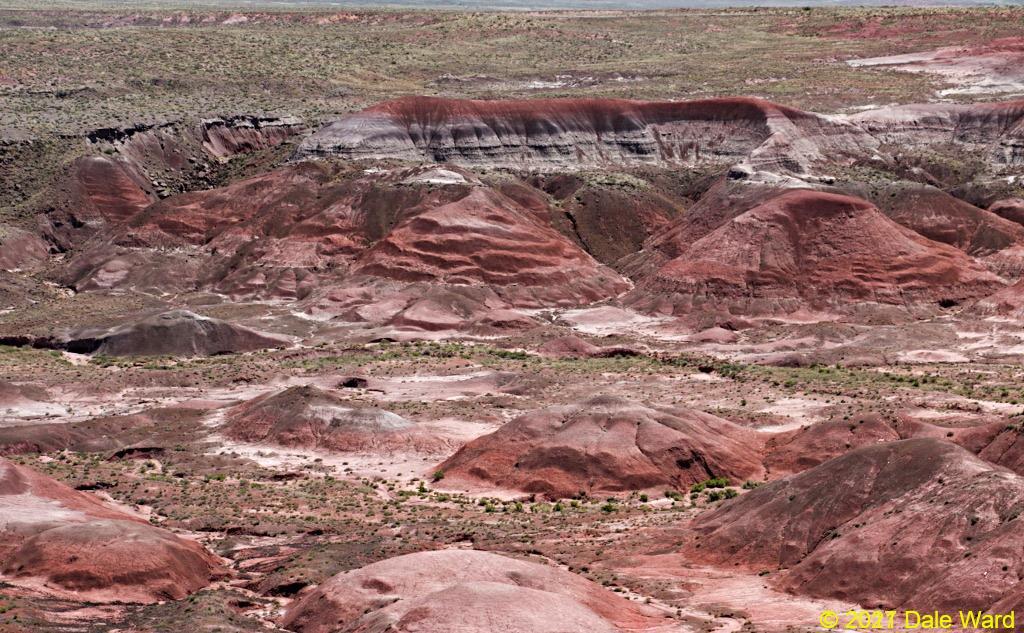 Painted Desert. You can see the grassland at the top of the valley, with the exposed “Painted Desert” below.
Painted Desert. You can see the grassland at the top of the valley, with the exposed “Painted Desert” below.
I wanted to get a better look down in the canyons, so I stopped at the “Crystal Forest” overlook. I started walking down a hiking trail that runs from the overlook and down through the badlands of the clay hills.
This land was laid down sometime in the Triassic, about 220 million years ago. That was before Dinosaurs “ran things” in the world. Dinosaurs were just one of a number of groups within the Archosaurs (the “Ruling Reptiles”). The apex predators of the time were variations on giant crocodiles. Some of these walked around on their hind legs, and looked remarkably like the Dinosaurs with which we’re more familiar. What, after all, is a world without a Tyrannosaurus analogue?
It would be another 20 million years or so before a major extinction event near the end of the Triassic would clear the way for the rise of the Dinosaurs.
This land was swampy and tropical then. Volcanoes were erupting, dumping ash and debris on the land. Big trees in the surrounding mountains would sometimes be downed in massive mudslides, windstorms, and similar catastrophes. Some of these mudslides carried the downed trees into the swamps of what would become the Painted Desert. The silica and mineral-rich volcanic dust, over time, infiltrated and replaced the wood of the downed trees, turning them into rock. And Hey Presto! - petrified wood.
But that was then…and this is now. The swamps were gone, and the ground was dry and powdery. Each step I took would raise a puff of talc-like dust.
The petrified logs erode up and out of the ground as the clay and dust in which they are embedded blows away. Sometimes the exposed logs snap under their own weight, and they break into nice, perpendicular-ended segments. They look like well-sliced pieces of chord wood.
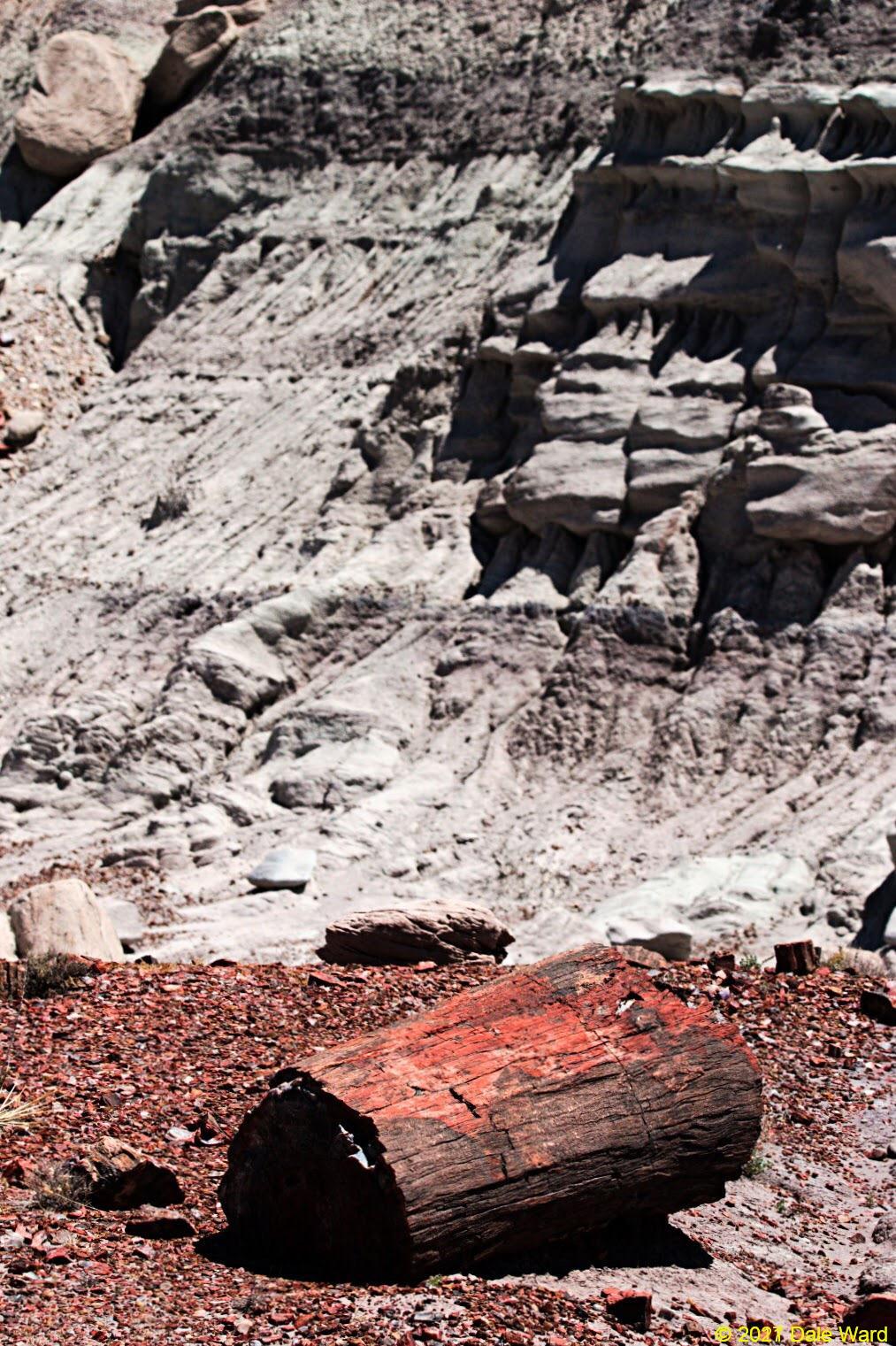 Petrified wood with clay hills in the background. The logs look like they’ve been cut with a chainsaw, so neat and perpendicular are the ends.
Petrified wood with clay hills in the background. The logs look like they’ve been cut with a chainsaw, so neat and perpendicular are the ends.
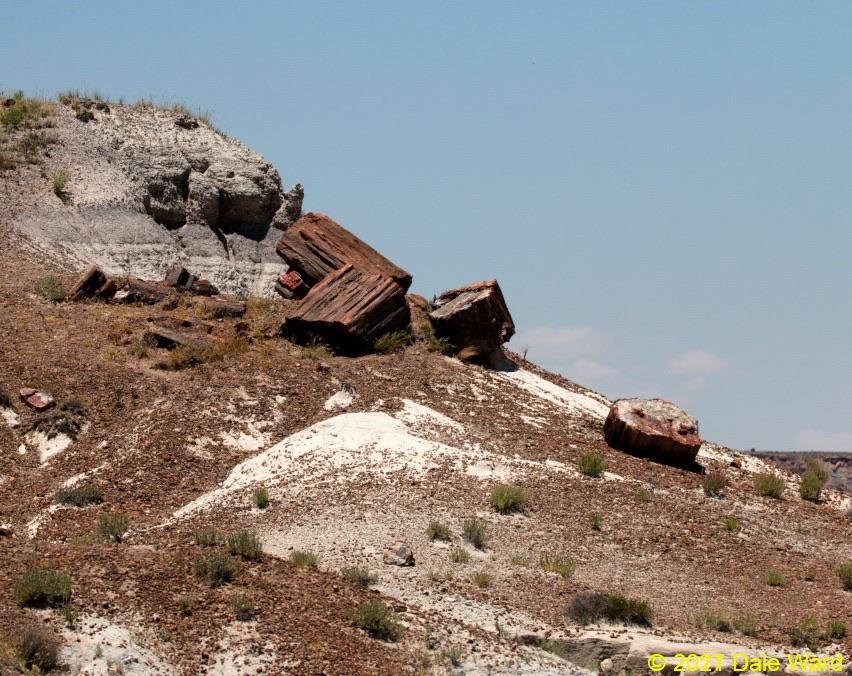 Scattered petrified logs. You can see the white of the clay on the slopes, and the small stones of the desert pavement where the clay and dust have blown away. That desert pavement is mostly made of fragments of petrified wood.
Scattered petrified logs. You can see the white of the clay on the slopes, and the small stones of the desert pavement where the clay and dust have blown away. That desert pavement is mostly made of fragments of petrified wood.
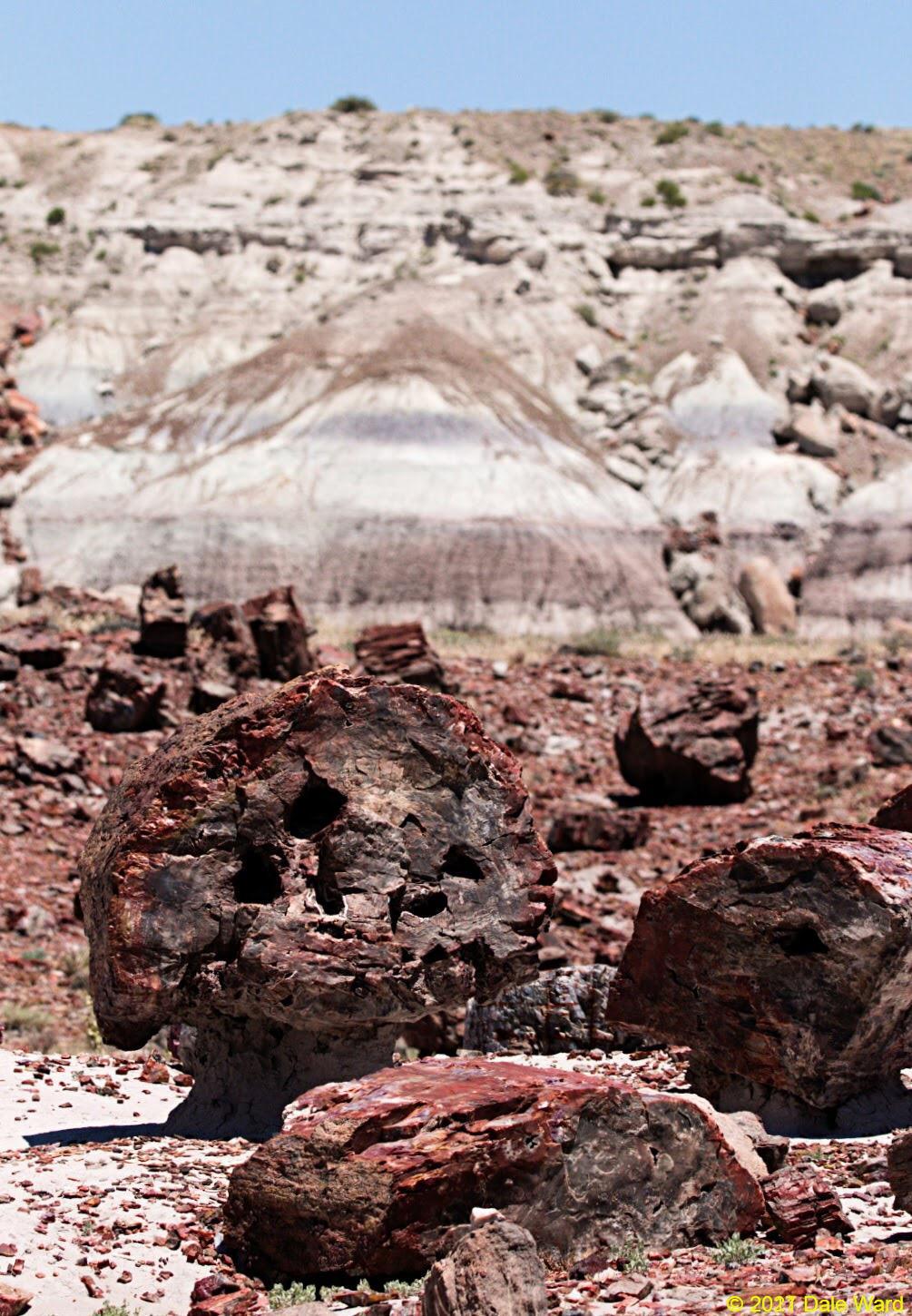 Crystal Forest - petrified wood in the foreground, sloping hills of clay in the background
Crystal Forest - petrified wood in the foreground, sloping hills of clay in the background
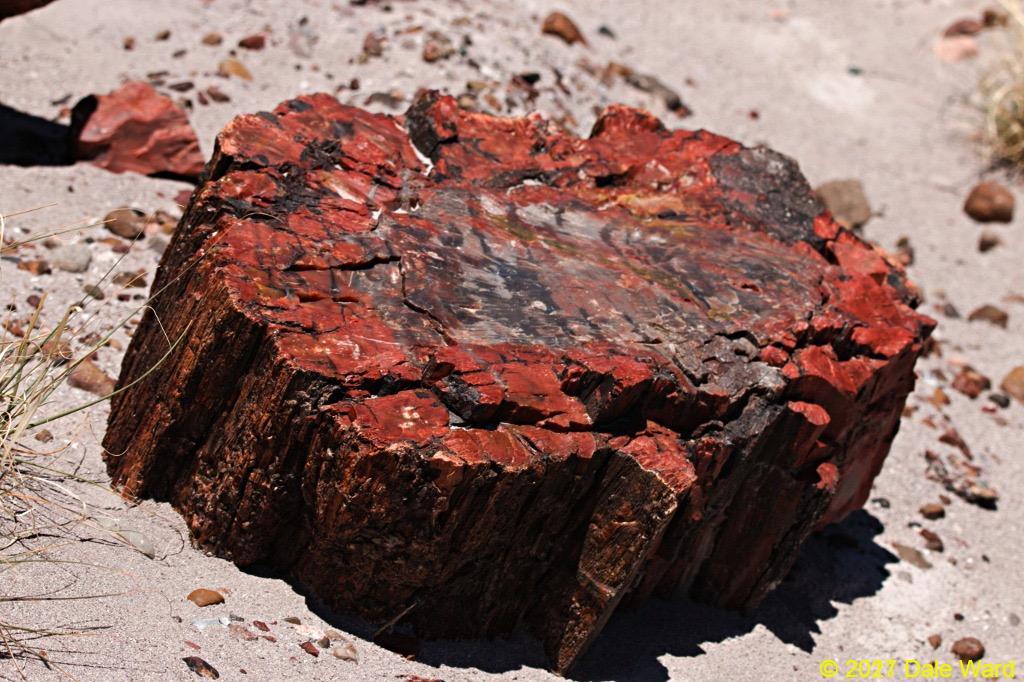 Petrified wood section. The wood has been replaced by minerals.
Petrified wood section. The wood has been replaced by minerals.
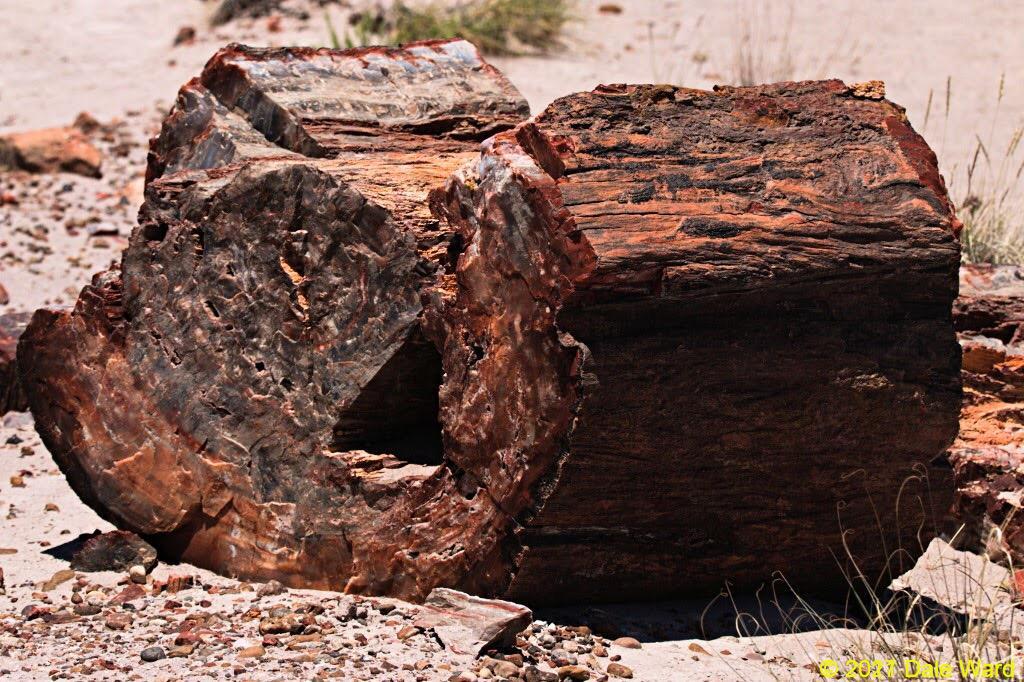 Petrified wood at the Crystal Forest
Petrified wood at the Crystal Forest
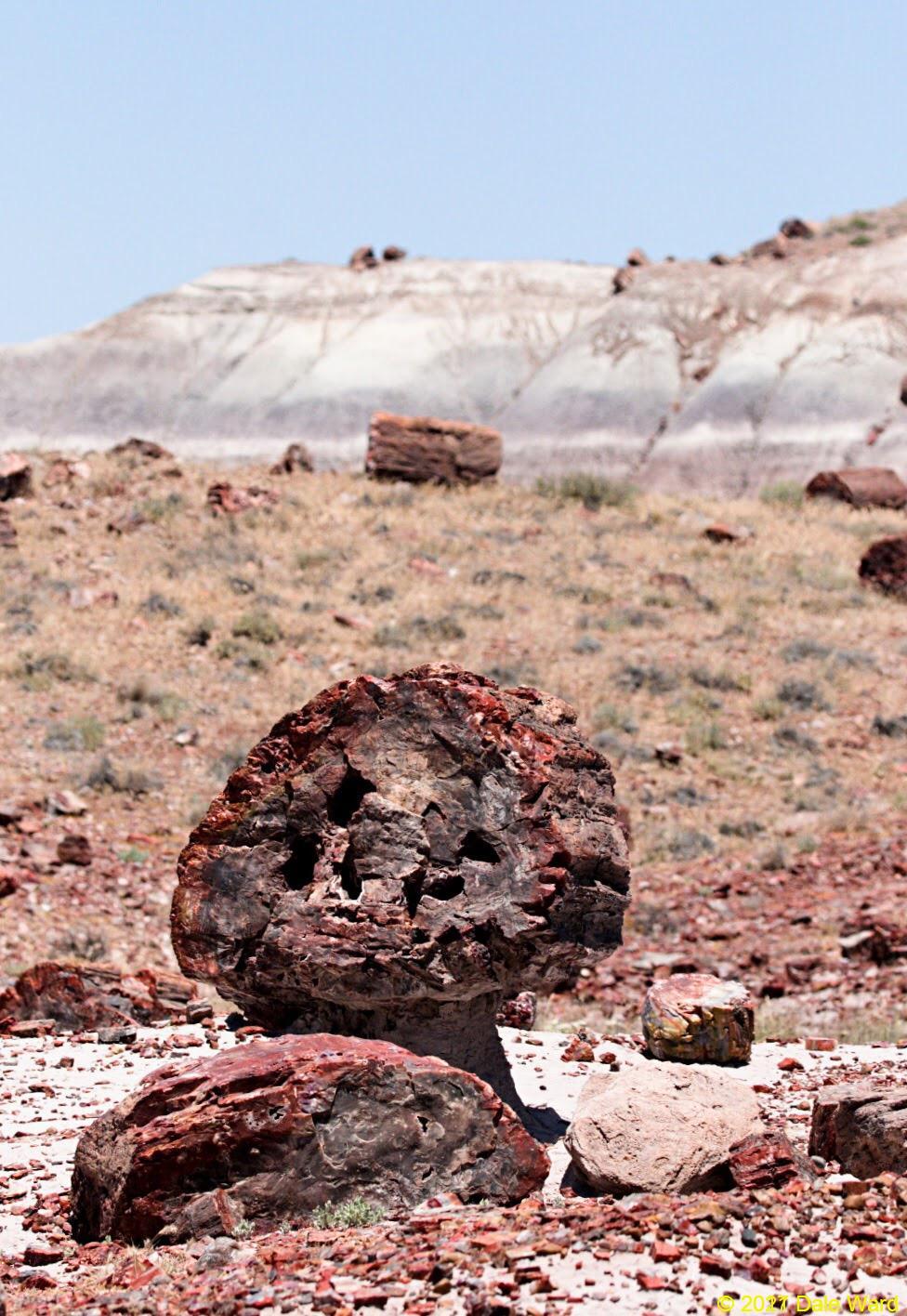 The petrified wood was scattered throughout the area.
The petrified wood was scattered throughout the area.
A lot of the petrified wood sections had lichens growing on them. I thought this was interesting, that the lichens would grow on the petrified logs as they grow on the surface of live trees. -300x239trified wood.*
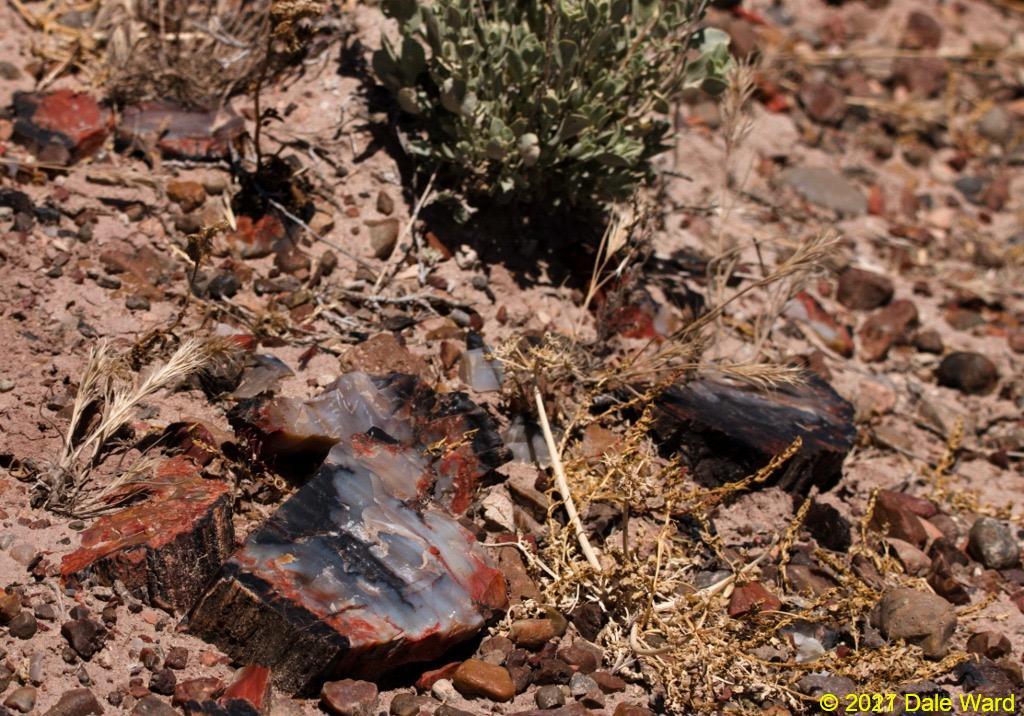 Chunks of petrified wood were scattered all around.
Chunks of petrified wood were scattered all around.
In some places, the ground was paved with pebbles and fragments of petrified wood. The dust and clay had eroded away, leaving just a thin top-surface layer of stones that were too heavy blow away - the “desert pavement”.
There weren’t a lot of plants growing is this clay/desert pavement mix. At least some of the clay was bentonite - which expands a lot when it’s wet, and then contracts a lot when it’s dry. This movement, combined with the very dry conditions, and the way the clay turns to dust and blows away, makes it hard for plants to grow.
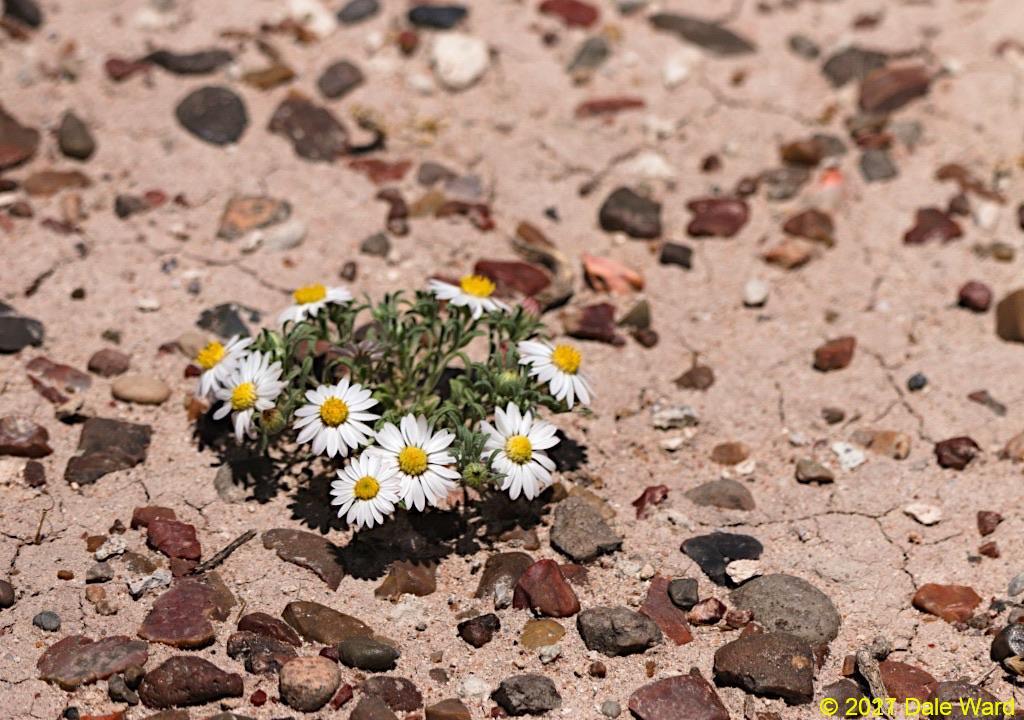 Small cluster of Daisy-like flowers. The cluster was perhaps two inches in diameter.
Small cluster of Daisy-like flowers. The cluster was perhaps two inches in diameter.
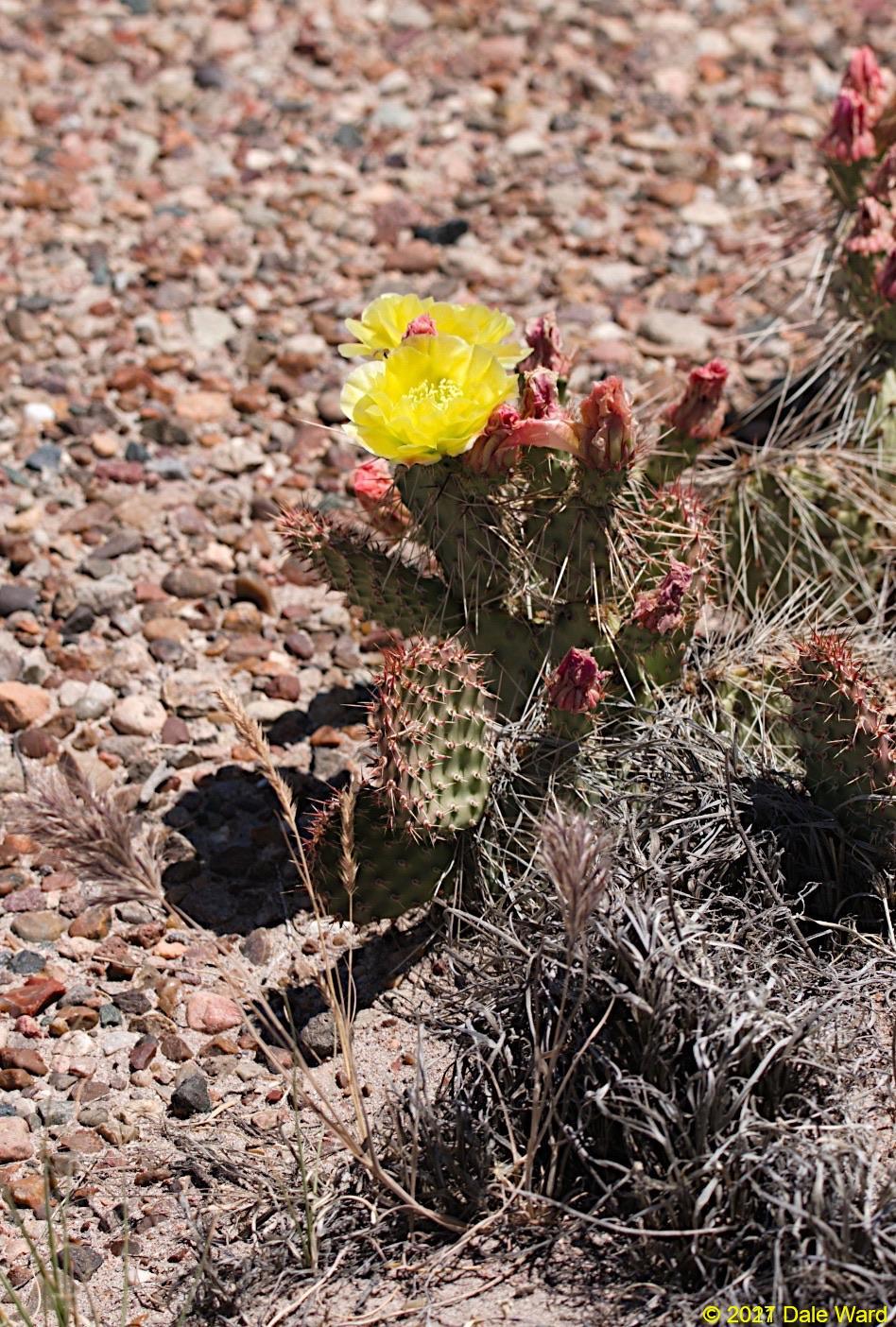 Prickly Pear growing out of the desert pavement
Prickly Pear growing out of the desert pavement
There weren’t very many birds, either. The only birds I saw down in the badlands was a pair of Horned Larks and a pair of Rock Wrens. The desert was so quiet that the calling of the Wrens seemed very loud.
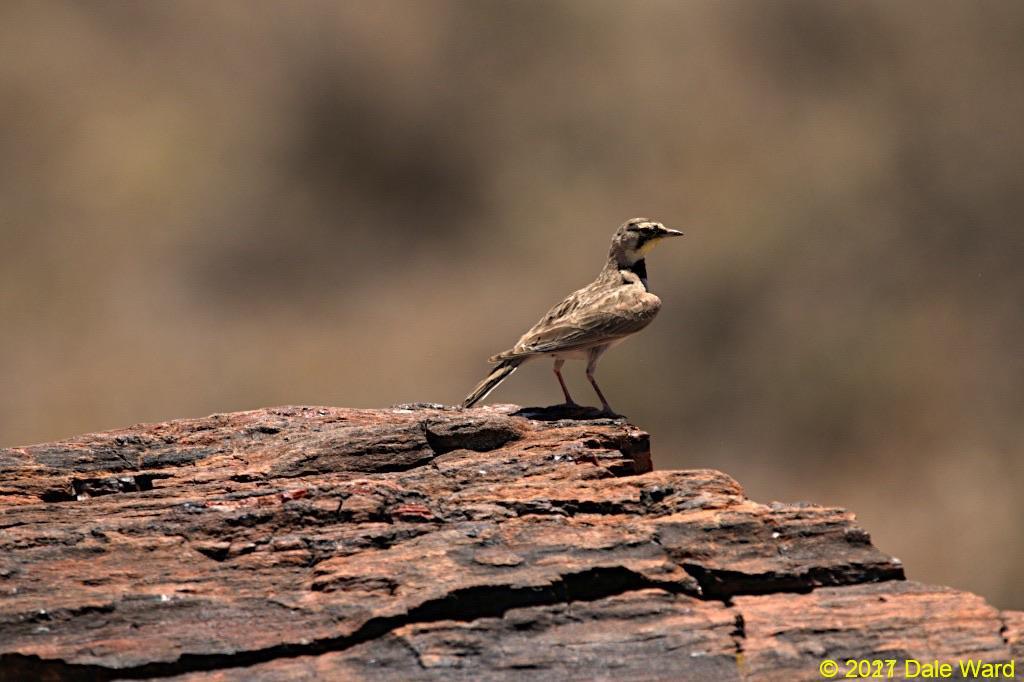 There was a pair of Horned Larks, probably nesting nearby
There was a pair of Horned Larks, probably nesting nearby
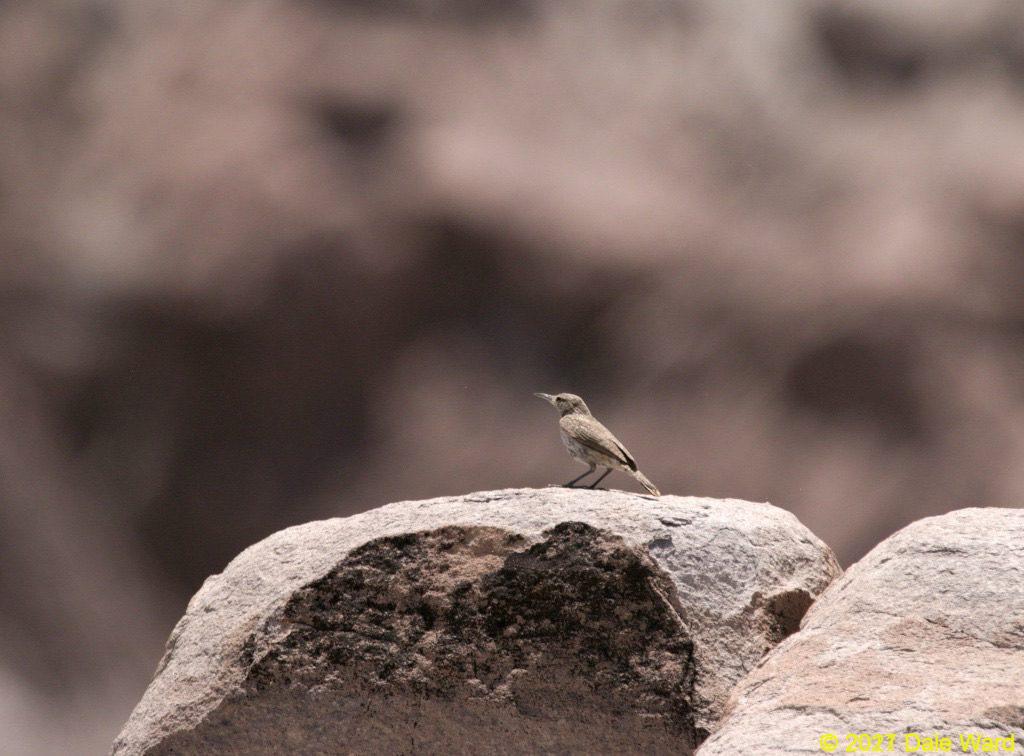 There was also a pair of Rock(?) Wrens.
There was also a pair of Rock(?) Wrens.
On the way out of the Park, I stopped at the Park’s Rainbow Forest Museum. It’s a really good museum. The exhibits there helped to show how much this area has changed - going from a prehistoric wetland to the current desert.
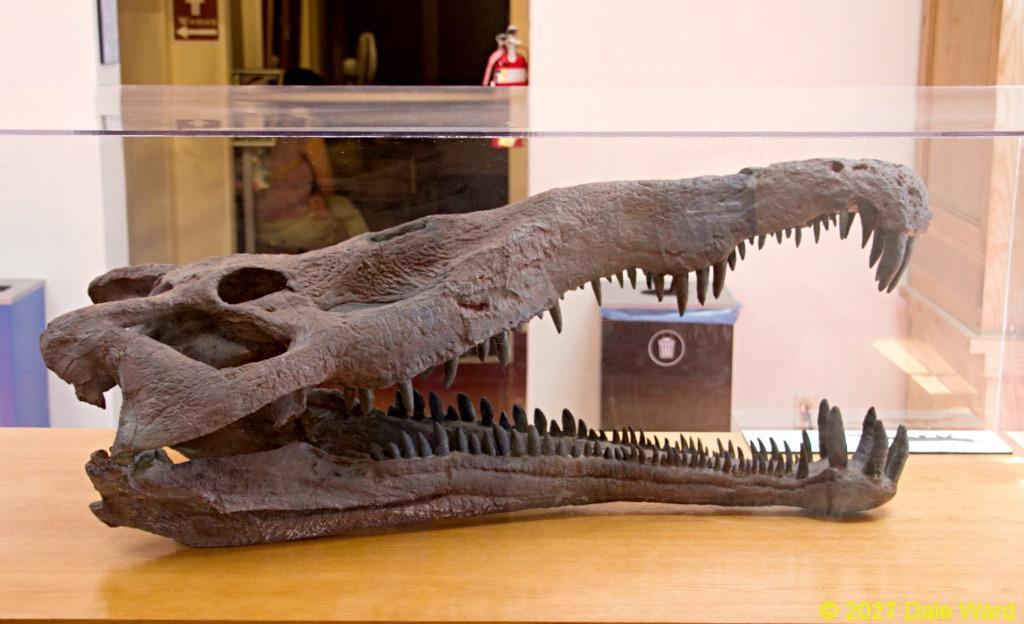 A Phytosaur skull at the Park’s Rainbow Forest Visitor Centor. Phytosaurs were massive Crocodile-like reptiles.
A Phytosaur skull at the Park’s Rainbow Forest Visitor Centor. Phytosaurs were massive Crocodile-like reptiles.
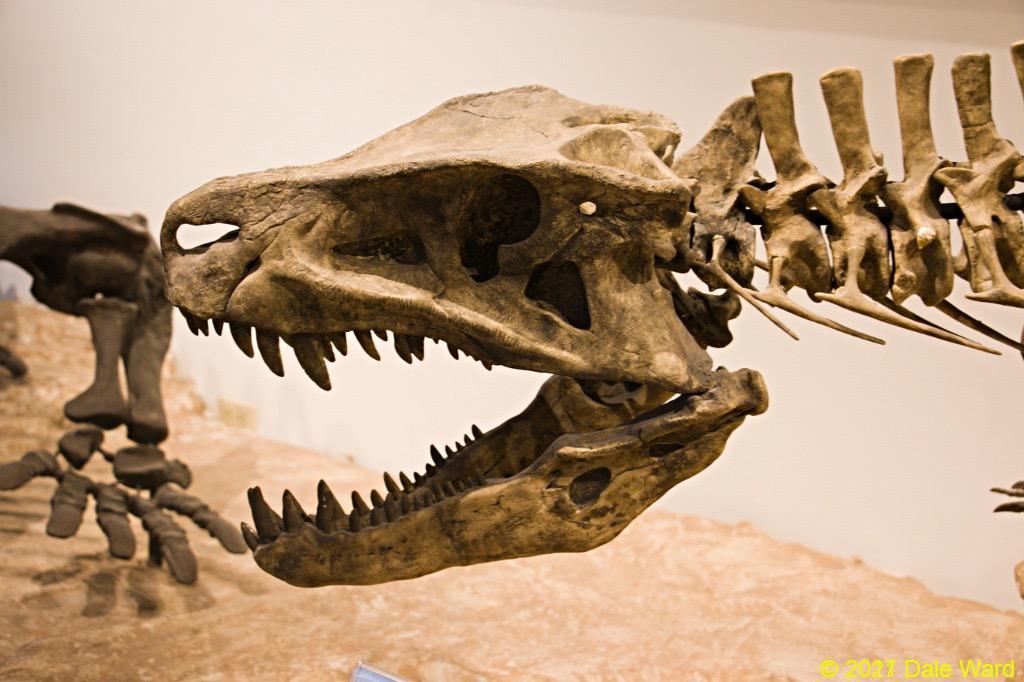 A Rauisuchid. This was one of the numerous non-dinosaur apex predators of the time.
A Rauisuchid. This was one of the numerous non-dinosaur apex predators of the time.
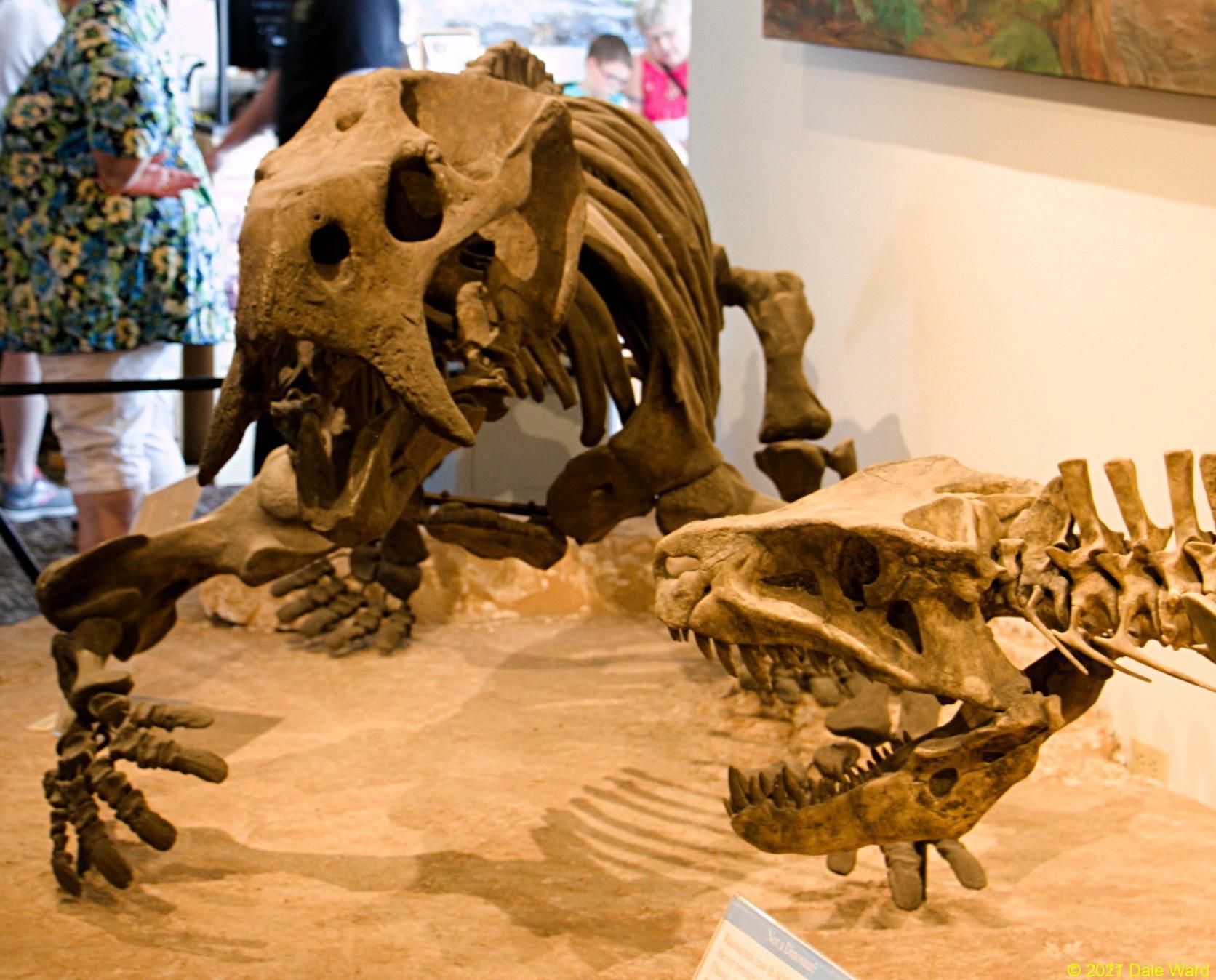 Placerias(?) (left) and Rauisuchid (right)
Placerias(?) (left) and Rauisuchid (right)
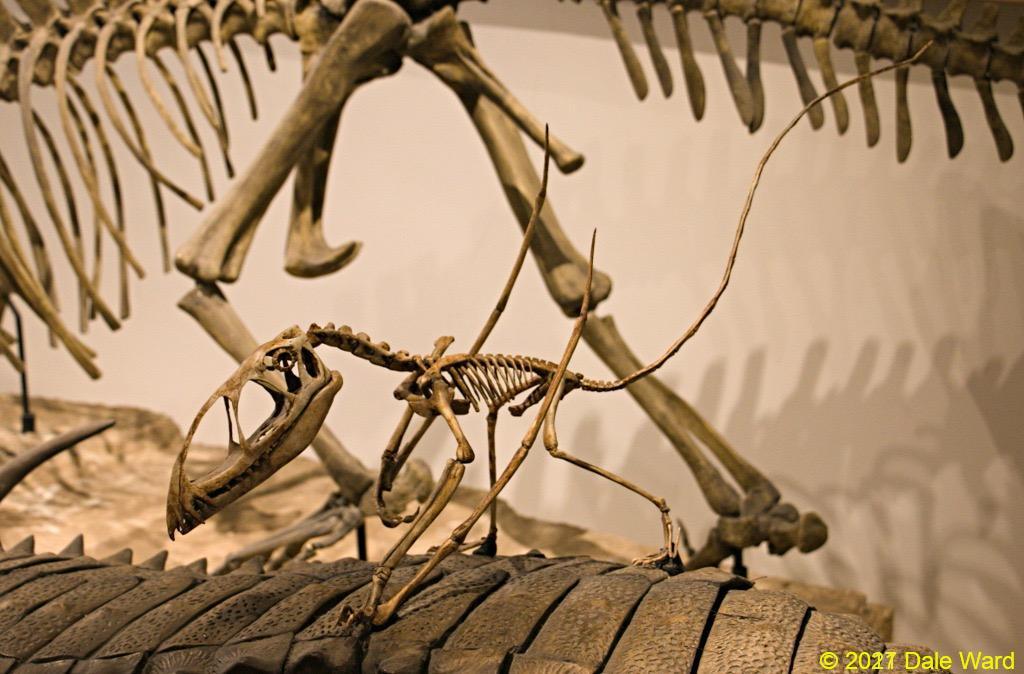 Pterosaur skeleton, perched on _Desmatosuchus_ skeleton.
Pterosaur skeleton, perched on _Desmatosuchus_ skeleton.
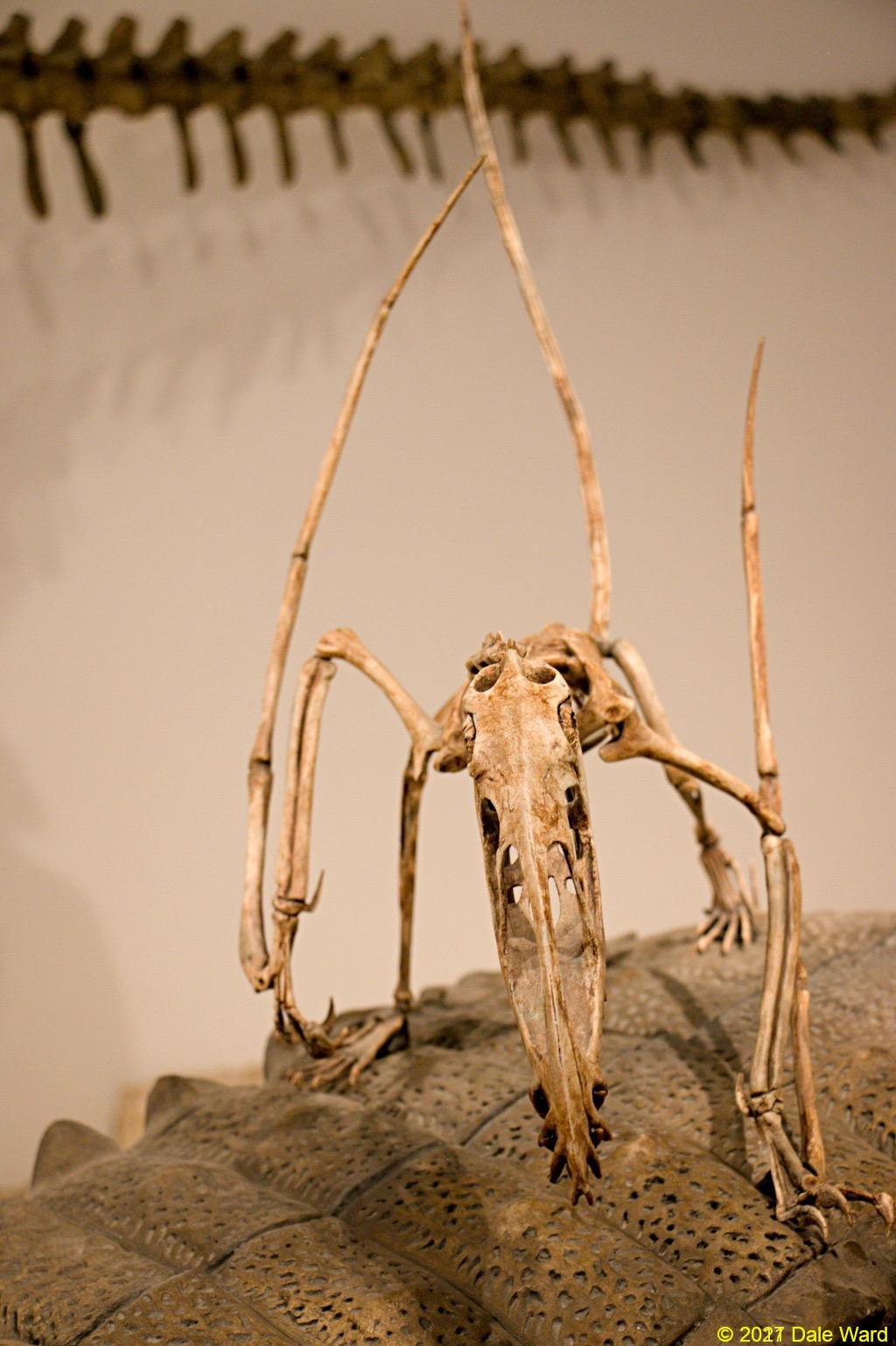 Pterosaur skeleton, front view. I was quite enamored of this skeleton.
Pterosaur skeleton, front view. I was quite enamored of this skeleton.
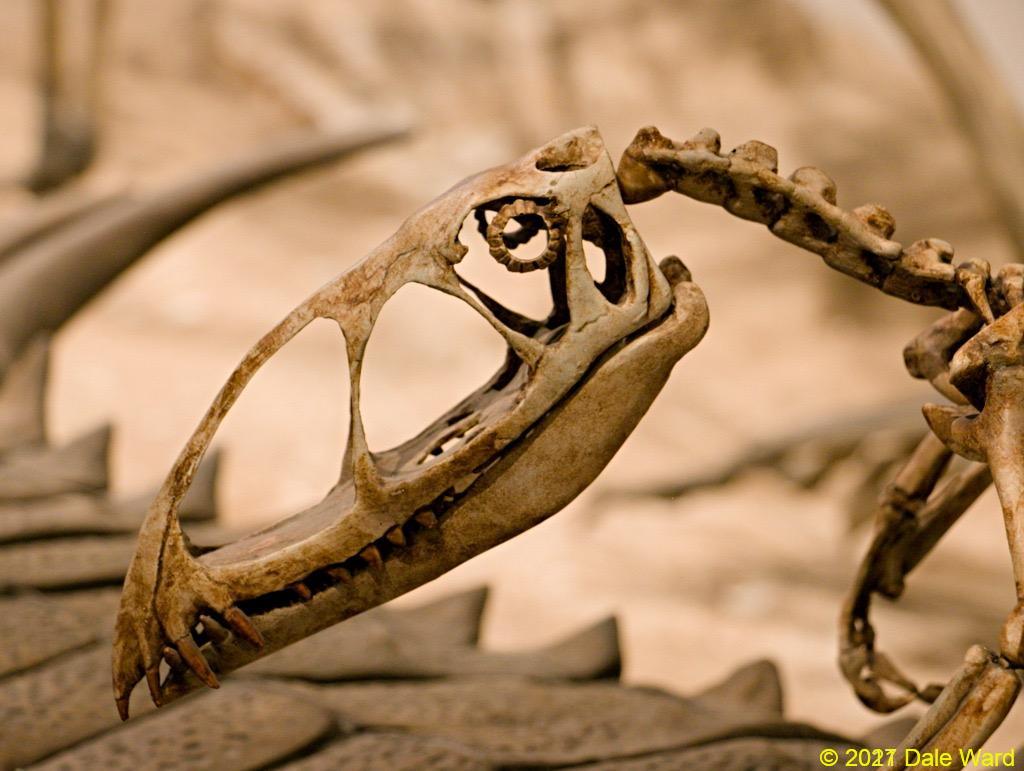 Close up of Pterosaur skull. Neat to see the sclerotic ring (the bones around the eye).
Close up of Pterosaur skull. Neat to see the sclerotic ring (the bones around the eye).
I had a good time looking at the fossil replicas on display, but unfortunately forgot to get a photo of the Metoposaur - a six foot long “Hell Salamander.”
This side trip through the Park only took two or three hours. I’d love to revisit this place and spend more time there, maybe get a back-country permit and camp out.
Just to see more of it.
